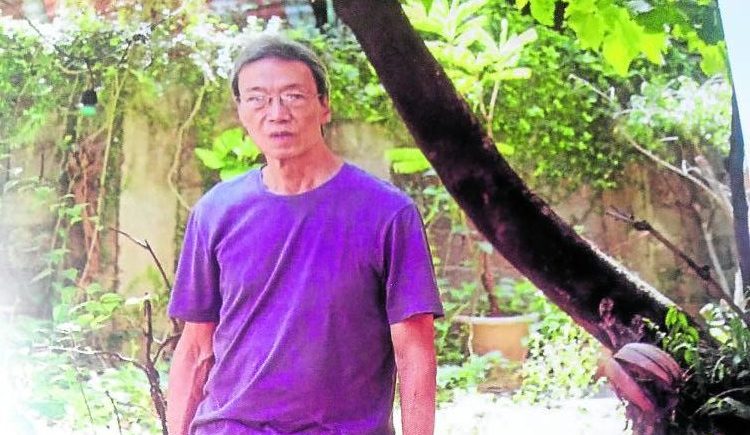
When Pablo “Adi” Baens (he later dropped the “s”) Santos was young, his mother made him choose between the piano and painting, for he was skilled in both drawing and playing on the ivory keys. He chose visual art, believing he had more chances to succeed professionally here. It turned out to be a wise decision, but his love for music never waned. And later, during parties with friends, he would always be called upon to play the piano.
Baen Santos, who died recently of a heart attack at the age of 73, was from Sta. Cruz, Manila; studied at Cecilio Apostol Elementary School, high school at the University of Santo Tomas; and was enrolled in chemistry before shifting to fine arts at the University of the Philippines (UP). Among his professors were National Artists Jose Joya, Federico Aguilar Alcuaz and Larry Alcala.
Broadened outlook
After graduation, he joined The Sunday Times Magazine of The Manila Times, then the leading daily, replacing Benedicto Cabrera (BenCab), yet another future National Artist. In an interview in 2019 for Erehwon Center for the Arts in Old Balara, Quezon City, Baen Santos said, “My outlook improved. My social outlook broadened because of association with writers and my exposure to the countryside as photographer-writer, a kind of photo essayist.”
The years preceding the imposition of martial law in September 1972 were a time of ferment; students were up in arms against the iron rule of President Marcos. At UP the students proclaimed a “Diliman Republic,” playing in the sound system Marcos singing “Pamulinawen” and making love to Dovie Beams, the Hollywood actress who was his mistress. First lady Imelda Marcos was livid.
Baen Santos joined Kaisahan, a group of visual artists whose works reflected sociopolitical realities and who protested against state-sanctioned art. Their manifesto declared, “We shall therefore develop an art that reflects the true conditions in our society.” Their members included soon-to-be-prominent social realists like Egai Fernandez, Renato Habulan, Biboy Delotavo and (the late) Neil Doloricon. Critics were divided. Alice Guillermo and Eric Torres wrote perceptively about the works of the social realists, while Rodolfo Paras-Perez was indifferent; Leo Benesa, writing in the crony Daily Express, called it “propaganda.”
While staying legal, Baen Santos was drawn to the protest movement and to Marxism. He contributed to underground publications, documenting, sketching, taking photos and writing what he saw in the countryside. He studied Karl Marx, believing the writings of that philosopher “answered everything.” And from the Parliament of the Streets, he and his fellow social realists moved to the mainstream of the art world, supported by progressive galleries, like Hiraya, Pinto and Ayala Museum.
The social realists participated in group exhibits and held their own one-man shows. Baen Santos’ canvases and murals are grim and unrelenting, filled with suffering but defiant humanity, children cowering before bombs, pickets and demos, avenging figures, Mother Philippines weeping over the fate of her people and, in a satiric mold, congressmen (“baboons”) in session.
Centered on the Bible
Social realism was at its height from the 1970s to the 1980s. In time, however, what the artist called a “turning point” in his life occurred. There had been a series of “enlightened” failures in the countryside. As he put it: “There was my countryside exposure, there was conflict with the rebel forces. We were assured victory was coming. We had so much faith in science, in the masses. The NPAs (New People’s Army), they were showing the loot from the soldiers, including nameplates. Why was there suffering? Why were they failures?”
And the leader in Utrecht had been accused by his ex-comrades of being the brains behind the infamous Plaza Miranda bombing in 1972. “He has blood on his hands,” said one friend who had been a communist for many years.
Baen Santos was brought up a Catholic. One photo shows him in immaculate first holy communion attire, flanked by a small statue of the Virgin Mary and a votive candle. In time he returned to Christianity, centered on the Bible.
“I don’t want to call it being born again,” he told me. Renewed Christian will do. He remained steadfast in his advocacy, however, his stand against injustice.
“I can still explore many themes, social realities, no longer just of the material world but of the spiritual world,” he said. “I don’t want to deviate from my mandate, which is to tell the truth.” —CONTRIBUTED